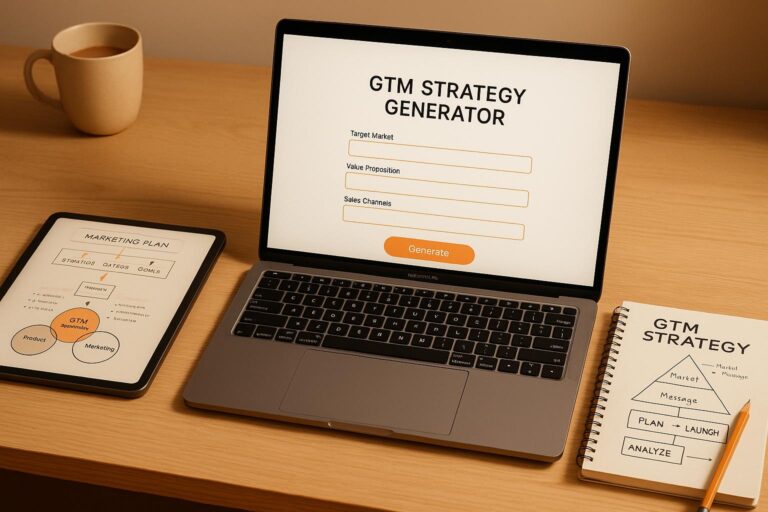In these times, businesses face economic shifts and changing consumer habits. This makes improving content marketing efficiency a must, not just a choice. Marketers need to make sure their content strategies are smart. They must ensure every dollar is spent well and works hard to elevate the digital marketing impact. By improving their methods and using new strategies, companies can get more website visitors. They can also improve engagement and increase earnings, even with limited resources.
Today, being efficient in marketing means doing more with less. It’s about smartly managing resources and coming up with clever strategies to get the most value. But how can one turn limitations into chances? It begins with focusing on being efficient, making it a key part of every plan and action. This approach looks closely at costs and benefits, aiming for the best results.
Key Takeaways
- Efficiency in marketing means getting the best results with minimal investment.
- Limited resources need clever strategies to improve content marketing efficiency.
- To increase website traffic, focusing on content that requires less resource but has high impact is crucial.
- Being resourceful in marketing helps keep or boost brand visibility, even in hard times.
- Staying current with trends is important for a smart content strategy.
- It’s critical to know how to check and improve content performance for ongoing growth.
- Using technology and automation can really elevate digital marketing impact.
Understanding Content Marketing Efficiency
Content marketing efficiency looks at the link between what you spend (like time, money, and manpower) and the results you get. It’s all about getting the most while spending the least. This is very important now when each dollar must be spent wisely.
Definition of Content Marketing Efficiency
Simply put, content marketing efficiency means making your marketing work better. It’s about doing things in a way that meets business goals and helps with SEO. You look at your plans, then tweak them. This ensures they use fewer resources but bring in more leads, better engage customers, and increase sales.
This strategy makes digital marketing more effective. It makes sure that every content piece meets consumer needs without going over budget.
Importance of Efficiency in Marketing Strategies
Efficiency is key in content marketing strategies. It lets businesses make content more smoothly, saving time and money. Also, it improves how well leads turn into customers.
By being more efficient, businesses can keep growing. They adjust to changes in the market and what consumers want.

Key Performance Indicators (KPIs) are crucial for seeing how well these strategies work. Setting clear KPIs lets businesses see where they’re doing well and where to improve. Common measures include looking at website visits, how engaged people are, and how many visitors buy something. These numbers show how well content connects with readers.
Now, think about what a company aims to achieve with better marketing efficiency:
| Objective | Target |
|---|---|
| Increase website traffic | 20% growth in six months |
| Lead generation | 500 new leads per month |
| Enhance social media engagement | 15% growth over the quarter |
| Conversion from blog readers | 10% conversion rate within one year |
With a deep understanding of content marketing efficiency, companies can not just reach but surpass these goals. This helps them achieve bigger business objectives and keep thriving.
Analyzing Your Current Content Marketing Strategies
For better online engagement and ad campaign optimization, analyzing your current content marketing strategies is key. By looking into marketing efficiency metrics, you can find areas for improvement. This analysis helps enhance your tactics for success.
Metrics to Evaluate Content Performance
It’s vital to know how your content impacts your business goals. Here are some key metrics for insights:
- Conversion Rate: Calculates the percentage of visitors taking a desired action. It’s essential for measuring content’s effectiveness in driving sales.
- Bounce Rate and Time on Page: Evaluate user engagement and content relevance. Lower bounce rates and higher time on pages mean more effective engagement.
- Social Shares and Comments: Show how well content connects with the audience. They help in spreading content further and in community building.
- Customer Acquisition Cost (CAC) and Sales: Evaluate the financial efficiency of content marketing in attracting new customers and revenue generation.
Tools for Content Analysis
Leveraging advanced tools can help deeply analyze content performance and consumer patterns:
- A/B Testing: Aids in determining which version of content performs better. This improves decision-making.
- Heatmaps and Scroll Depth Analysis: Provide visual interpretations of user interactions with content. They offer insights on layout and content structure improvements.
- SEO and Analytics Platforms: Tools like Google Analytics track organic traffic and keyword performance. They’re vital for refining SEO strategies and enhancing search visibility.
Identifying Strengths and Weaknesses
Understanding what works and what doesn’t allows for smart adjustments. This step involves looking at high-performing content and spotting weak areas. Below is how to assess these components:
- Study Customer Feedback to grasp audience preferences.
- Examine Competitive Benchmarks to see how your content measures up industry-wide.
- Assess engagement data like Brand Mentions and Social Shares to estimate brand influence and authority.
Using these analytics and feedback helps tweak your content strategy. This can make your marketing more effective.
| Metrics | Data |
|---|---|
| Conversion Rate | Indicates success rate of content in driving sales. |
| Bounce Rate | Shows visitor departure rate after one page, aiming for lower. |
| Social Shares | Indicates content’s viral potential and engagement levels. |
| Customer Acquisition Cost | Measures marketing efficiency in cost terms. |

Practical Tips to Enhance Content Production
To make your content better, using structured plans and new tools is a must. Advanced content systems and methods help boost your content’s effects and reach.
Streamlining the Content Creation Process
Good content starts with great planning. A content calendar keeps your posts regular and timely. It’s key for stuff like blogs and videos, especially for young people from 18 to 34.
They love these types of content. Using content scalability tactics is wise. Aim for searchable and easy-to-find topics to widen your reach without extra effort.
Utilizing Effective Content Management Tools
Great content tools optimize creation and ensure it meets your goals. Tools that track analytics change the game. Today, 51% of businesses track to see what works, improving their content plans.
Custom tools make content feel unique and more engaging. They help make your message stronger and more personal.
| Content Type | Preference Among 18-34 year olds | Example Platforms |
|---|---|---|
| Videos | High | YouTube |
| Blog Posts | High | Various Online Publications |
| Infographics | Medium | Pinterest, Blogs |
Explore new content types like infographics and interactive videos to engage more people. Using SEO to focus on a few keywords per content piece improves traffic and rankings.
Creating strategic, top-notch content efficiently is the aim. Whether improving current ways or using new digital tools, focus on impactful content. This ensures a strong online presence.
Leveraging Technology to Boost Efficiency
Today’s market is highly competitive. The use of advanced technology in content marketing boosts visibility and streamlines operations. It’s crucial for businesses to use strong tools for SEO content strategies, automation in marketing, and data analytics insights. With the correct approach, technology transforms regular campaigns into powerful tools. These tools drive engagement and conversions.
The Role of SEO in Content Marketing
SEO is a key part of digital marketing efforts. AI tools help with keyword research and content optimization. This way, businesses create content that matches user intent and search engine rules. This increases visibility and engagement. Companies like Amazon and Starbucks use AI to improve their SEO strategies. This ensures great user experiences and more web traffic.
Automation Tools for Content Distribution
Getting content to the audience efficiently is vital. Automation tools allow businesses to post content on many platforms easily. Automated email sequences, for instance, increase click-through rates by 119%. This significantly broadens the reach of digital marketing with little manual work.
Data Analytics for Informed Decision-Making
Data analytics is crucial for understanding consumer behavior. Predictive analytics tools can guess customer needs before they surface. This lets businesses customize their marketing efforts better. Such tools ensure marketing campaigns are personalized and react well to market changes. This leads to higher customer engagement and satisfaction.
A Forbes Tech Council analysis shows great benefits for SMBs from tech-driven strategies. It’s vital to use these tools to stay competitive in the fast-changing business world.
| Technology Type | Impact on Marketing Efficiency | Example of Use |
|---|---|---|
| AI in SEO | Enhances keyword research and content relevance | Content optimization for increased organic traffic |
| Marketing Automation | Reduces manual efforts in content distribution | Email marketing automation increasing engagement rates |
| Data Analytics | Enables targeted marketing strategies | Predictive analytics for anticipating consumer needs |
Continuous Improvement: Measuring Success and Adapting
In the ever-evolving world of digital marketing, crafting compelling messages is crucial. But, it’s also vital to ensure these strategies lead to real business results. Marketers adopt a multi-faceted approach that includes continuous marketing strategy improvement, setting ACHIEVABLE goals, and staying on top of marketing trends. Analytics and strategic adaptation are essential in turning insight into actionable steps.
Setting ACHIEVABLE Goals for Content Marketing
For a competitive edge, marketers need goals that are Actionable, Clear, Human-centric, Integrated, Engaging, Valuable, and Evaluated—ACHIEVABLE. Tools like DivvyHQ make it easy to track progress and tweak tactics. Goals should align with strategies like market penetration and diversification. Real analytics back these goals, making strategies measurable, data-driven, and responsive to customer feedback. This enhances engagement and satisfaction.
Regularly Reviewing and Adjusting Strategy
Optimization goes beyond setting goals. It includes constant monitoring and tweaking based on key metrics like engagement and web traffic. Through this review, marketers understand audience behaviors and campaign effectiveness, leading to smart decisions. Metrics such as cost-per-acquisition and customer value help ensure financial success and long-term gains. Incorporating a customer-centric approach aligns growth with customer needs, boosting satisfaction and loyalty.
Staying Updated with Industry Trends
Being able to quickly adapt to market changes and trends is crucial. Cross-functional teamwork promotes innovation and brings adaptability to your marketing strategy. Keeping up with industry trends helps your brand not just survive, but thrive. Leveraging new tech, using the latest tools, and continually learning keeps strategies fresh and effective. This way, companies can spot and leverage opportunities for growth with confidence.
FAQ
How can I improve content marketing efficiency?
Enhance your content marketing by refining your strategy for digital impact. Measure and make your content creation process smoother. Use SEO to bring more visitors to your site. Always evaluate and improve your tactics for better outcomes.
What is content marketing efficiency?
It’s about how effective your strategy is at reaching goals within your budget. It means using resources wisely and ensuring every action adds to your campaign’s success. This boosts your digital marketing’s impact.
Why is efficiency important in marketing strategies?
Efficiency makes sure you use time and money in the best way. It stretches resources, boosts your return on investment, and keeps your brand visible, especially during tough economic times.
What metrics should I use to evaluate content performance?
Track metrics like cost per acquisition, customer costs, click rates, and conversions. Use the Marketing Efficiency Ratio too. These help check your content’s impact and fine-tune your efforts.
Which tools help in content analysis?
Use tools like A/B testing, surveys, content systems, data software, and SEO tools. They help you understand your audience and maximize online attention.
How do I identify the strengths and weaknesses of my content strategy?
Look at your marketing metrics, get feedback, test content, and see if it meets your goals. This shows what works and what needs changing.
What are some practical tips to enhance content production?
Improve production by using Agile methods, focusing on key content, recycling assets, and using good content systems. This boosts your output and quality.
How can the use of technology boost content marketing efficiency?
Tech raises efficiency by improving SEO, automating content tasks, using data for decisions, and using automation tools. This sharpens your marketing efforts.
What does setting ACHIEVABLE goals entail for content marketing?
Make goals that are clear, actionable, and focused on people. They should be engaging, valuable, and checked regularly. This approach makes your content efforts more effective and focused.
Why is regular review and adjustment of content strategy important?
It’s key for keeping your marketing strategy on track. It lets you adapt to market and customer changes, and tweak your approach for better results.
How can I stay updated with industry trends to maintain an effective content marketing strategy?
Stay current by learning about new tools and strategies, going to conferences, watching competitors, and studying trends. This helps adapt your strategy to keep engaging your audience effectively.



